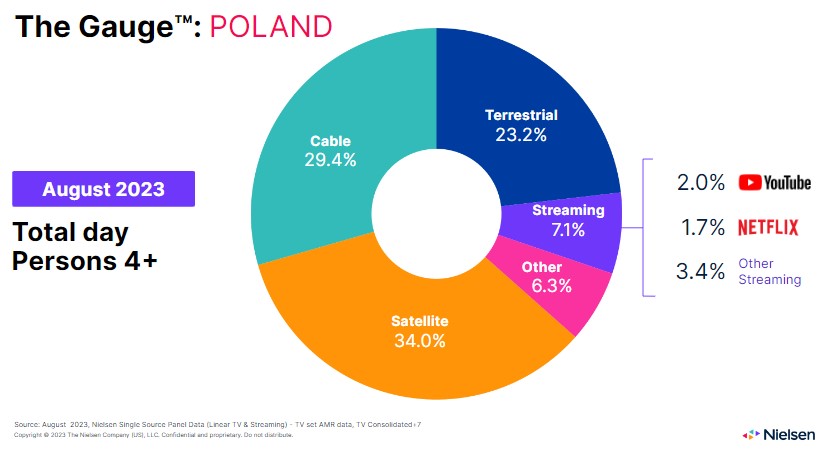August and the whole summer is usually characterized by less time spent watching content on TV screens at home than other seasons. And this year’s August is no different – Poles were spending on average 3 hours and 32 minutes in front of TV screen, while during winter months the average time was 4 hours and 15 minutes. In August the largest share of TV viewing was generated by people watching satellite TV (34%), and traditional television accounted for 86.6% of TV viewing. On traditional television, as in July, the most popular programs were news and sports content. At the same time, streaming usage on TV reached a new record, rising 0.2 percentage points from July to 7.1%.
YouTube remained the most frequently watched streaming platform, accounting for 2% share in the time spent watching content on the TV screen, up 0.1 percentage from July). Netflix retained its 1.7% share of TV usage, unchanged from July.
None of the remaining streaming platforms grouped in the “Other streaming” category has yet reached the viewing threshold to be broken out separately in the Gauge.

About The Gauge™
The Gauge™ was created to provide the media industry with a monthly analysis of television usage across key television delivery platforms. Nielsen published its first edition of The Gauge™ in the U.S. in May 2021.
About The Gauge™ Methodology
The data comes from Nielsen’s single-source panel consisting of 3,500 households and almost 9,700 panelists. The Gauge™: Poland is based on monthly AMR (Average Minute Rating) audience share data. The data is presented for people over 4 years old, broken down into cable, satellite, terrestrial television (both linear and shifted in time up to 7 days), and viewership from streaming (live streaming viewership of TV stations on OTT platforms is classified as streaming viewership). The “Other” category includes views of unrecognized content.
Nielsen Poland created this iteration of The Gauge™ using methodologies conceptually similar to those in the U.S. version. Methodological differences should be considered when making any comparisons.
